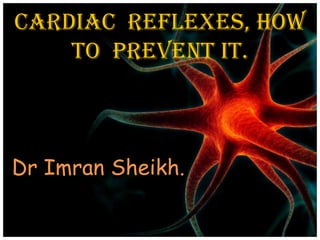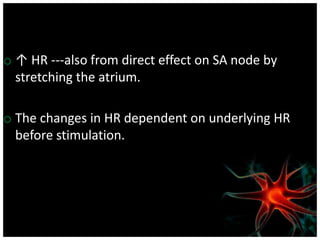Cardiac reflexes involve afferent and efferent nerve pathways between the heart and central nervous system that help regulate cardiac function and homeostasis. Key reflexes discussed include the baroreceptor reflex, which helps maintain blood pressure, and the Bezold-Jarisch reflex, which causes hypotension, bradycardia, and coronary artery dilation in response to ventricular stimuli. Preventing or treating reflex cardiovascular changes during surgery may involve atropine, local anesthesia, lignocaine infusion, or adjusting anesthesia depth.



















































